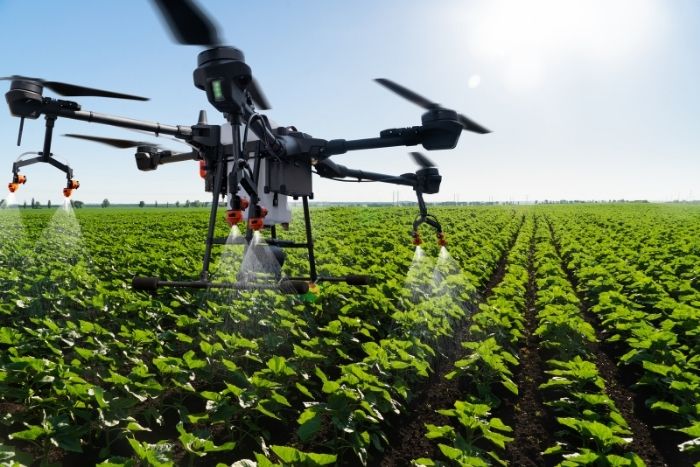

The Impact of Technology on Agriculture: Revolutionizing the Way We Grow and Produce Food
Agriculture, the backbone of human civilization, has undergone significant transformations over the centuries. From traditional farming practices to modern mechanized farming, technology has played a pivotal role in shaping the agricultural landscape. The integration of technology in agriculture has not only improved crop yields and reduced manual labor but has also enabled farmers to make data-driven decisions, reducing waste and increasing profitability. In this article, we will delve into the impact of technology on agriculture, exploring the benefits, challenges, and future prospects of this rapidly evolving field.
Precision Agriculture: The Future of Farming
Precision agriculture, also known as precision farming, is an approach that leverages advanced technology to optimize crop growth and reduce waste. This approach uses sensors, GPS, drones, and satellite imaging to collect data on soil health, weather patterns, and crop growth. By analyzing this data, farmers can identify areas of inefficiency and make targeted interventions to improve yields and reduce waste.
One of the most significant benefits of precision agriculture is its ability to reduce chemical usage. By using precision agricultural techniques, farmers can apply fertilizers and pesticides only when necessary, reducing the environmental impact of agriculture. For instance, according to a study by the University of Illinois, precision agriculture has been shown to reduce nitrogen fertilizer use by up to 20%.
The Role of Drones in Agriculture
Drones, or unmanned aerial vehicles (UAVs), have emerged as a valuable tool in agriculture. Equipped with high-resolution cameras and sensors, drones can gather detailed information on crop health, growth, and development. This data can be used to identify issues such as crop stress, pests, and diseases, enabling farmers to take prompt action.
Drones can also be used for crop spraying, reducing the need for manual labor and minimizing the risk of chemical exposure. Moreover, drones can help farmers inspect their fields more efficiently, reducing the time and cost associated with traditional scouting methods.
The Internet of Things (IoT) in Agriculture
The Internet of Things (IoT) has revolutionized the way farmers collect and analyze data. IoT sensors can be deployed in fields to collect data on soil moisture, temperature, and humidity. This data can be transmitted to the cloud, where it can be analyzed using advanced algorithms, providing farmers with actionable insights.
IoT has also enabled the development of smart irrigation systems, which can automatically detect soil moisture levels and adjust water supply accordingly. This not only saves water but also reduces energy consumption.
Big Data Analytics in Agriculture
Big data analytics has become an essential tool in agriculture, enabling farmers to make data-driven decisions. By analyzing large datasets, farmers can identify patterns and trends that can inform planting schedules, crop selection, and harvesting strategies.
Big data analytics can also help farmers predict weather patterns, enabling them to prepare for extreme weather events such as droughts and floods. Furthermore, big data analytics can help farmers optimize their supply chain, reducing waste and increasing profitability.
Artificial Intelligence (AI) in Agriculture
Artificial intelligence (AI) has the potential to transform agriculture in numerous ways. AI-powered systems can analyze large datasets, identifying patterns and trends that can inform farming decisions. AI can also be used to develop autonomous farming systems, where machines can plant, monitor, and harvest crops independently.
AI-powered chatbots can also be used to provide farmers with real-time advice and guidance, helping them to optimize their farming practices. Moreover, AI can be used to develop predictive models that can forecast crop yields, enabling farmers to make informed decisions about pricing and marketing.
Challenges and Limitations
While technology has the potential to revolutionize agriculture, there are several challenges and limitations that need to be addressed. One of the primary challenges is the lack of access to technology, particularly in developing countries. Many farmers lack the resources and infrastructure to adopt new technologies, creating a digital divide between farmers.
Another challenge is the issue of data privacy and security. With the increasing amount of data being generated by farming operations, there is a growing concern about data breaches and cyberattacks. Farmers need to ensure that their data is protected from unauthorized access and misuse.
Future Prospects
The future of agriculture is bright, with technology poised to play an increasingly important role. As the global population is projected to reach 9.7 billion by 2050, agriculture will need to become more efficient and productive to meet the increasing demand for food.
In the future, we can expect to see the widespread adoption of autonomous farming systems, where machines will be able to plant, monitor, and harvest crops independently. We can also expect to see the development of more advanced AI-powered systems that can analyze vast amounts of data, providing farmers with real-time insights and guidance.
Conclusion
Technology has the potential to transform agriculture, making it more efficient, productive, and sustainable. From precision agriculture to drones, IoT, big data analytics, and AI, technology is revolutionizing the way we grow and produce food.
However, as we move forward, it is essential to address the challenges and limitations associated with the adoption of technology in agriculture. We need to ensure that farmers have access to the resources and infrastructure needed to adopt new technologies, and that their data is protected from unauthorized access and misuse.
By harnessing the power of technology, we can create a more sustainable and food-secure future, where agriculture is able to meet the needs of a growing global population.




